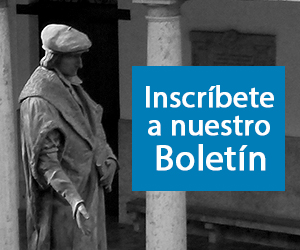
Autora: Antonia Nieto Alonso. Catedrática de Derecho Civil, Universidade de Santiago de Compostela. antonia.nieto@usc.es.
Resumen: El propósito de este estudio consiste en tratar de demostrar la superación de la proscripción de las mejoras tácitas, con carácter general, en nuestro ordenamiento jurídico.
La existencia de una mejora tácita a favor de hijos o descendientes puede inferirse, tanto de diferentes preceptos del Código civil, como de la interpretación de la voluntad del testador, o, en su caso, del donante. No en vano, la calificación como mejora de una donación o de una disposición testamentaria encierra un fenómeno interpretativo de la declaración de voluntad. Se incorporará el “valor del cuidado” para tomar en consideración la posibilidad de entender que las mejoras se han efectuado en atención, precisamente, a los cuidados. Por lo demás, el recurso a la prueba extrínseca de la voluntad testamentaria puede desempeñar un papel inestimable en la averiguación de la voluntad de mejorar a algún hijo o nieto, cuando no resulte clara la voluntad testamentaria. En conclusión, se defiende el principio de la preeminencia absoluta de la voluntad del testador, ley de la sucesión (art. 675 CC), piedra angular de la interpretación testamentaria.
Palabras clave: sucesión testamentaria; donación; legítima; tercio de mejora; mejora tácita; interpretación del testamento; prueba extrínseca de la voluntad testamentaria; el valor del cuidado.
Abstract: The purpose of this study is to try to demonstrate the overcoming of the proscription of tacit improvements, in general, in our legal system. The existence of a tacit improvement in favour of children or descendants can be inferred, both from different precepts of the Civil Code and from the interpretation of the will of the testator or, where applicable, of the donor. It is not in vain that the qualification of a donation or testamentary disposition as an improvement involves an interpretative phenomenon of the declaration of will. The “value of care” will be incorporated to take into account the possibility of understanding that the improvements have been made precisely because of care.
Furthermore, recourse to extrinsic evidence of the testamentary will can play an invaluable role in ascertaining the will to improve a child or grandchild, when the testamentary will is not clear. In conclusion, the principle of the absolute pre-eminence of the testator’s will, the law of succession (Art. 675 CC), the cornerstone of testamentary interpretation, is defended.
Key words: Testamentary succession; donation; legitimate; third of improvement; tacit improvement; interpretation of the will; extrinsic proof of the testamentary will; the value of care.
Sumario:
I. INTRODUCCIÓN. –
II. LA CALIFICACIÓN COMO MEJORA TÁCITA DE DISPOSICIONES “INTER VIVOS” Y “MORTIS CAUSA”. –
III. SUSTITUCIONES HEREDITARIAS Y MEJORA TÁCITA: EL ALCANCE DE LA INTERPRETACIÓN DEL TESTAMENTO. –
IV. OTRAS POSIBLES MEJORAS TÁCITAS EN DISPOSICIONES TESTAMENTARIAS. –
1. Mejora tácita derivada de la desigualdad en las cuotas hereditarias. –
2. Mejora tácita en el caso de la desheredación injusta y posible mejora tácita en la preterición intencional. –
3. Mejoras tácitas por disposición del testador a través de los artículos 1056.2.º en relación con el artículo 1075 del Código civil. –
V. EL PERTINENTE RECURSO A LOS MEDIOS DE PRUEBA EXTRÍNSECOS DE LA VOLUNTAD TESTAMENTARIA PARA AVERIGUAR LA EXISTENCIA DE LA INTENCIÓN DE MEJORAR. –
VI. RECAPITULACIÓN FINAL Y PROPUESTA “DE LEGE FERENDA”.
Referencia: Actualidad Jurídica Iberoamericana Nº 20, febrero 2024, ISSN:2386-4567, pp. 730-765.
Revista indexada en SCOPUS (Q3), REDIB, ANVUR (Clase “A”), LATINDEX, CIRC (B), MIAR, RRDe (Q1), IDR (C3).





